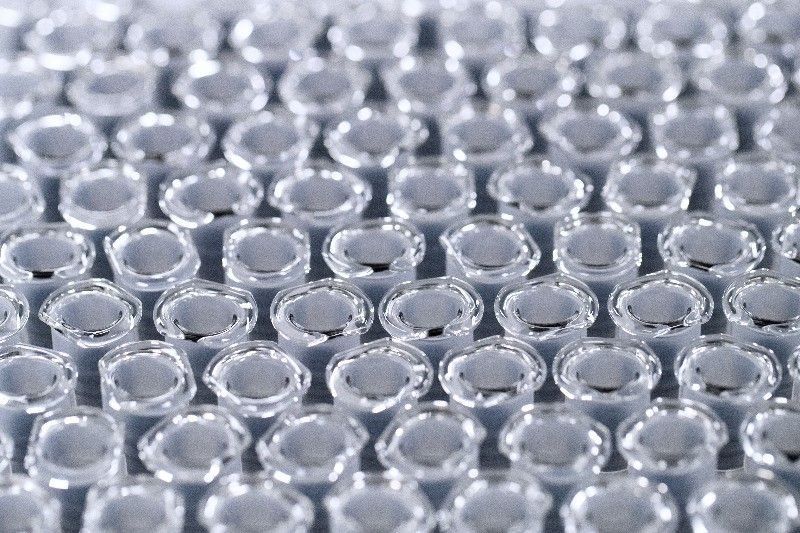Vaccine demand may be met only in October – Galvez

MANILA, Philippines — The demand for COVID-19 jabs may be met only in October, the country’s vaccine czar said, as he cited the need to secure 25 million doses per month to expand the government’s inoculation drive.
During a meeting of the government’s pandemic task force last Wednesday, Secretary Carlito Galvez Jr. admitted that while the volume of vaccine deliveries is large, the supply would be inadequate if the inoculation is opened to the A1 to A5 groups.
The priority sectors of the vaccination drive are health workers, their immediate families, and outbound overseas Filipino workers (A1); senior citizens (A2); people with health risks or comorbidities (A3); economic frontliners (A4), and the indigent population (A5).
“Our gap is still huge. We have a gap of 42.6 million, the gap between supply and demand. And we are expecting to meet the demand in October,” Galvez pointed out.
“Based on our reference model, we can see that we really lack supply for now so the recommendation of the DOH (Department of Health) and the National Task Force (against COVID-19) is to concentrate on the A1, A2 and A3 so we can have that symbolism, what we call the population protection for those in the vulnerable sector,” he added.
Galvez reported that the Philippines has so far received 31.36 million doses of COVID-19 shots. He said the shots can be administered to 17.3 million individuals, noting that most of the vaccines are given in two doses while the one developed by Johnson & Johnson is a single-dose jab.
He said the government should acquire 25 million doses of COVID-19 vaccines per month to expand its vaccination program.
“We have to raise the 16 million (doses) expectation. Sir, we have to make it 25 (million). If we combine the targeted population, more or less we have 59,929,000. And then the projected eligible population is 70 million,” he added.
A total of 18.7 million jabs have been administered as of July 28, according to government data.
More than 11.4 million people or 16.33 percent of target recipients have received their first dose while 7.27 million or 10.4 percent of vaccine eligible individuals have been fully vaccinated.
Presidential spokesman Harry Roque said the Philippines has so far exceeded its goal of administering 500,000 doses per day twice and that the goal of vaccinating 50 million persons against COVID-19 this year is not far-fetched because of the expected arrival of additional vaccines.
More vaccine arrivals
The United Kingdom will begin delivering this week 415,000 doses of AstraZeneca COVID vaccines to the Philippines to help tackle the pandemic, announced British Foreign Secretary Dominic Raab.
“The UK is sending 415,000 doses of AstraZeneca vaccine to the Philippines. This is part of the first batch of the 100 million doses we’ve pledged to get the poorest parts of the world vaccinated as a matter of urgency,” Raab said. “We’re doing this to help the most vulnerable, but also because we know we won’t be safe until everyone is safe.”
Yesterday morning, Cebu Pacific brought in from China another one million doses of Sinovac vaccines at the Ninoy Aquino International Airport. The budget carrier is also expected to fly in an additional 1.5 million doses from Beijing today.
Both shipments were pre-cleared by the Bureau of Customs.
BOC-NAIA district collector Mimel Talusan said that since February 2021, more than 30 million doses of COVID-19 vaccines have been cleared and released by the bureau—16 million of Sinovac, 6.8 million of AstraZeneca, 350,000 of Sputnik V, 3.4 million of Pfizer, 500,000 of Moderna and 3.2 million of Johnson & Johnson.
Intervals
Amid proposals to shorten the interval of the two doses of COVID-19 vaccines amid the presence of Delta variant cases, an expert from the Department of Health said Wednesday night that the data on this is “not really good.”
In an interview with The Chiefs on Cignal TV’s One News, Anna Ong-Lim, who heads the DOH technical working group of new COVID-19 variants, noted that there is not enough evidence yet on shortening the interval between the first and second doses.
“I don’t see this as a response to this current problem. There will be an impact if you shorten the dose intervals,” she said.
According to Department of Science and Technology-Vaccine Expert Panel (VEP) head Nina Gloriani, having a longer interval is better for the COVID-19 vaccinees.
“In fact, if you prolong, it might even be better… We know that if the interval is longer, the immune response (of the body) is better,” she said during a DOH forum.
Gloriani pointed out that some manufacturers tested their COVID-19 jabs for a “very short” period because of the pandemic and they wanted to provide the world with vaccines. However, it was found that while shortening the interval means generating antibodies immediately, these antibodies may be lower and may wane easily. — Pia Lee-Brago, Rudy Santos, Cecille Suerte Felipe, Neil Jayson Servallos, Sheila Crisostomo
- Latest
- Trending



























